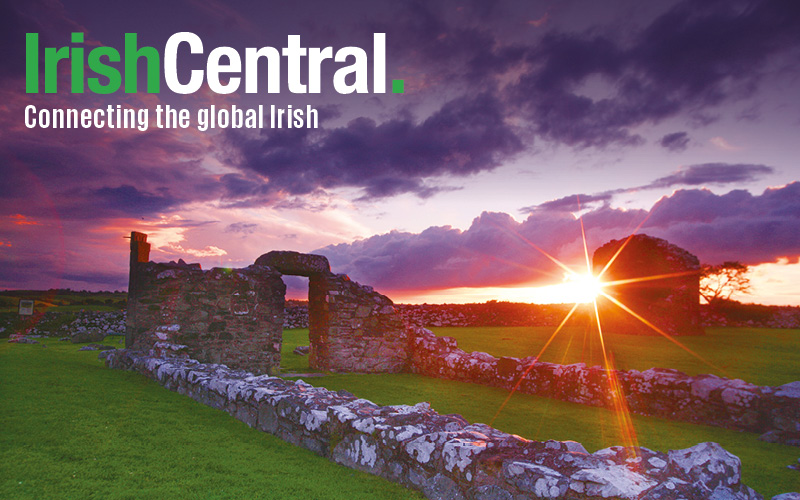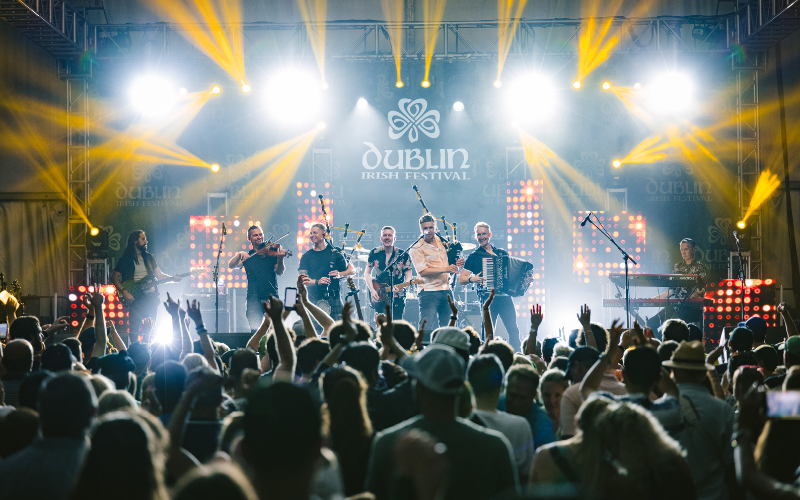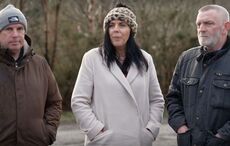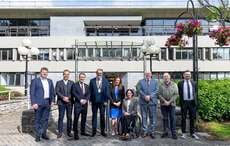FOR 41 years the Smithsonian Institution in Washington, D.C. has found a most extraordinary way to celebrate the birth of America around the various Independence Day rituals that mark the July 4th holiday. In keeping with its mission to inform, educate and entertain people who enter the various museums, the early summer calls for it to spill over to one of the finest festival grounds in the country, the massive mall that lies between the Capitol Building and the symbolic and majestic Washington Monument.
The 2007 Smithsonian Folklife Festival just concluded its latest 10-day extravaganza on the grounds that serve as a convenient backyard to entertain the masses, and among the invited participants were 160 people from Northern Ireland who attempted to provide an updated slice of life back home.
The first week drew most of the political attention, so only the July 4th fireworks along the Potomac River lit up the area for the final five days this past week that I was in attendance.
The news from Northern Ireland has been very different over the past decade or so since the Troubles made way for the ceasefire agreements and a sense of normalcy and prosperity returned to that corner of the island. The power-sharing government in place since May prepared an auspicious arrival into Washington for the many whose travel and participation was organized by the Smithsonian, the Arts Council of Northern Ireland and Rediscover Northern Ireland among other sponsors.
Since I was invited to serve as a presenter for the Northern Ireland exhibit in the music, story and dance sectors that is where I spent the majority of my time, and I was fortunate to see a number of wonderful performers for the first time and enjoy some others who are always worth seeing again.
The performance spaces were well laid out and accessible to one another, and the powerful sound from two lambeg drummers signaled the end of the multiple sessions all day and time to move up and get along and shift to the next area of interest.
The Sterritt family (Armagh) who made the drums shared a crafts tent with uilleann pipemaker Robbie Hughes (Down) and bodhran maker Eamon Maguire (Antrim).
Alongside that was a nice intimate tent called the Bann Stage where informal interviews or conversations were held in front of a homely fireplace and dresser that welcomed the audience to spend a little more time getting to know the artists and where they came from.
At times it was a little to close to a larger tent called the Foyle Stage, where music ensembles offered some distraction, or in the case of one bodhran panel, an opportunity for the savvy bodhranista, Gino Lipari (of Four Men and a Dog) to show how a jig from the Hidden Fermanagh group could be accompanied.
However, the Foyle Stage proved a very amenable place to present singers and storytellers like Len Graham (Armagh), Jack Lynch (Armagh and Dublin), Mick Quinn (Armagh), John Kennedy (Antrim), Patricia Flynn (Armagh) and Tommy and Colum Sands and Roisin White (Down), where more rapport with the audience was easier to maintain.
Surprisingly, it had the added advantage at attracting some welcome breezes off and on that helped offset the oppressive heat and humidity that does dampen this annual fete each year in D.C. These artists rotated along with musical groups like Craobh Rua, Hidden Fermanagh and the unique Ulster Scots Gospel group called the Low Country Boys who might have sounded very familiar to some of the American Southern gospel fans between the Foyle Stage and the larger performance area called the Lagan Stage.
The Lagan Stage had a dance floor which offered multiple workshops every day with a diverse group of dance instructors who shared what they would do at home. Mary Fox from Portadown shared the Fermanagh Set or Quadrille all week figure by figure with those who braved the heat along with some two hand dances as well.
She is also known for doing more work on the sean nos steps and dances like the Maggie Pickens back in Northern Ireland. She is also credited with sparking the set dancing revival up in the north of Ireland once coming under the spell of the Cork dancing master Joe O'Donovan who was a similar catalyst in America since his first tour in 1986 with his wife Siobhan.
Padraig Mac Cionnaith served as an able partner as a former student of hers now living in Colomiers, France, and she had some lovely dance musicians along as well in Sheila Boylan (Belfast Boylan family), Caroline Judge Fegan (Down) and Mary's husband, Ian Carmichael (Armagh).
Representing the Ulster-Scots tradition was a dance teacher and organizer named Lucy Mulholland and Lyn Rankin both from Carryduff, Co. Down. Her offerings were derived from Scottish Country dancing though more informal like the ceili figure dances that we are used to and also have an array of two hand dances to a variety of tunes from their tradition. Mulholland had James McElheran (Antrim) and Patsy Downey (Antrim) accompanying them all weekend.
For added measure, a lovely Indian dancer and teacher Nisha Tandon, who has spent most of her life in Belfast, was also on hand to illustrate the modern diversity on the isle as the population becomes more multicultural.
While the intention of including the Irish and Ulster-Scot along with the Indian add-on appeared to "balance" out the political equation for the organizers, as a dance instructor who often has done public gigs like this, trying to lump them all together in joint segments wasn't as productive as it could have been because you are almost finished before you get started and the transitions are rugged.
Nonetheless, these ladies handled it with great floor skills and aplomb and received a warm reception (pun intended) for their work.
Festivals like this are such massive logistical marvels that it is easy to be overwhelmed with all the choices and mesmerized by the organization and logical flow. But the real value to this attendee is the chance to discover talent or something that you weren't aware of before or perhaps under appreciated.
And that would certainly be the case for the extraordinary array of musical talent assembled by Smithsonian curator Nancy Groce and her co-producer Paul Flynn, the Traditional Music Officer for the Arts Council of Northern Ireland, who know where the heart of the tradition lies as trained folklorists often do.
Whether it is with a young firebrand modern trad group like the Belfast-based Craobh Rua or the earthly Hidden Fermanagh Ensemble who came over for this festival, the audience was exposed to the very best.
In fact, it is worth mentioning the Hidden Fermanagh contingent Gabriel McArdle, Jim McGrath, Pat McManus and Francis Rasdale, who along with Cyril Maguire and Cathal McConnell formulated a project back in 2003 that produced one of the finer CD and book companion sets to come into the traditional music world with the aid of the Arts Council of Northern Ireland.
I was able to get my hands on it finally at the Festival Marketplace and look forward to exploring further the marvelous music and songs that they presented in their sessions throughout the weekend. Based on my observation, their lovely sweet music indigenous to Fermanagh drawn from a musical collection from the 19th century tune book of John Dunn, it belongs in every home where Irish traditional music is revered. The website www.fermanaghmusic.com will tell you more about it and how to get your hands on it.
Similarly outstanding was the vocal contingent of Graham, Quinn, Kennedy, Lynch and the ladies, White and Flynn (mother of Paul) all weekend who varied their material and bolstered one another as they gave voice to the mighty state of traditional singing in the North.
Senior citizens like Mick Quinn (82), a retired sheep farmer who also was an exceptionally colorful storyteller with a booming voice and John Kennedy (79) handled the heat and long hours with amazing grace.
Fiddler Cathal Hayden (Tyrone) and bodhran player Gino Lipari (Derry) stuck out a second week and played some amazing sets with young piper Jarlath Henderson from Tyrone.
From the pipe and drum tradition, Robert Watt (highland pipes - Derry) showed award-winning skills and musicianship, as did snare drummers Mark Wilson and protg Lee Lawson who displayed dexterity like I've never seen before.
Helping to weave this all together were two folk craftsmen who have established themselves as legendary tradition bearers and catalysts who have also been plough sharing the peace process across the years from the early civil rights days.
Using all their literary, broadcast and performance talents, Colum and Tommy Sands from Rostrevor, Co. Down guided the program all week in an understated but highly eloquent manner that was fundamental to the success of it.
The final evening concerts on Saturday and Sunday were a memorable tour-de-force that bade the Troubles goodbye as Colum Sands declared before his brother led everyone in singing Down by the Lagan Side, "This festival couldn't have happened at a better time in history."
Colum also keenly observed on behalf of the guests from Northern Ireland, "We have been warmed by your welcome and you are a side of the U.S. that the world needs to see more of."
The image as presented by more dominant institutions based in Washington often shield the true picture of what Americans are all about and how our multicultural roots have more in common with the world around us than divides us.
Thankfully the Smithsonian Institution and, in particular, its Folklife Festival held every year (www.si.edu) is there to remind us of our common humanity and the James Smithson's original bequest of $500,000 from England to the U.S. in the early 19th century has produced incalculable dividends every since. I wish all our investments could be so productive.
Footnote: Tommy Sands accepted a last minute invitation to visit the Catskills Irish Arts Week on Monday and Tuesday of next week to share some Northern Ireland songs and stories.




Comments